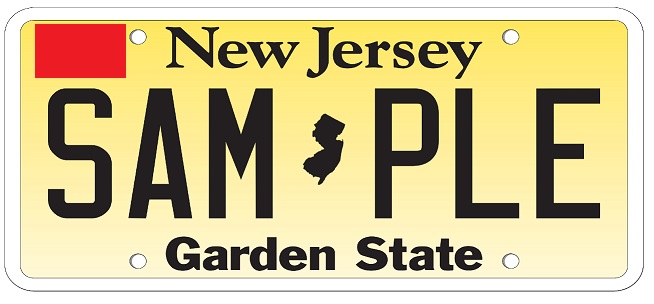Tag Archive: Teen drivers

Is The Florida Driving Test Too Hard?
July 20, 2015
Is the Florida driving test too hard? According to a story in the Tampa Bay Times, only 41 percent of test takers passed the test during the first six months of 2015.
Alarmed by one of the highest teen death rates in the nation, the Florida Department of Motor Vehicles and Highway Safety (DHSMV) decided to revamp the driving test for the first time in more than 20 years. Within a month of the introduction of the new exam, state officials were warning of an extremely high failure rate. Prior to the introduction of the new test, the failure rate was approximately 40 percent but after the new test was introduced, the failure rate rose to almost 70 percent statewide.
The old driving test actually consisted of two separate tests; a 20 question test on road signs and a 20 question test on road rules. The new test consists of a single 50 question test on both road rules and road signs. In order to pass, the test taker must answer 80 percent or more of the questions correctly.
Many are complaining that the new driving test has questions that are poorly worded, difficult to understand, or that have nothing to do with driving safety. Among the question examples in the Tampa Bay Times story was a question on how much it costs for a veteran to get a “V” designation on their driver’s license.
The driving test questions were created by a Nevada company called Solutions Thru Software. Some are complaining that the company has an incentive to make the test too hard because they receive a payment for each test taken through third party providers.
The state is trying to do a balancing act by creating a driving test that accurately gauges an applicant’s knowledge of driving laws while, at the same time, achieving a goal of a 70 percent passing rate. The state has changed or dropped some of the questions but, according to the DHSMV chief of staff Leslie Palmer, reaching a goal of a 70 percent passing rate may not be achievable this year.
The highest scoring county in Florida with 1000 tests taken is St. Johns County with a 57 percent passing rate. The lowest scoring county with 1000 tests taken is Nassau County with just a 32 percent passing rate.
What hasn’t changed is the need for future drivers to thoroughly study the Florida driver handbook if they want to pass the test. Applicants can also take practice exams online before attempting the real thing.
Read more: Failure rates spike after overhaul of Florida written driver’s license test

Have Red Decals Reduced Crashes For Teen Drivers? – It Depends!
July 1, 2015
A newly published study on the use of red decals by teen drivers in New Jersey seems to contradict a study published last year but that depends on the type of license the teen driver holds.
In 2010, New Jersey enacted a law requiring that teen drivers display a red decal in the upper left hand corner of the vehicle license plate. The law was designed to allow law enforcement officers to identify newly licensed teen drivers more easily in order to enforce compliance with the state’s graduated driver license laws (GDL).
Under the New Jersey GDL laws, there are two different permit phases that require a new driver to practice with an accompanying adult driver for at least six months before applying for a probationary license. A teen with a probationary license must drive unsupervised for at least one year and be at least 18 years of age in order to qualify for a basic driver’s license
Under the GDL laws, teen drivers with either a permit or a probationary license:
- must be accompanied by a licensed driver over the age of 21 during the permit phase,
- are prohibited from driving between the hours of 11:01 p.m. and 5:00 a.m.,
- are prohibited from using hand-held or hands-free cell phones or any other electronic devices.,
- are limited to the number of passengers they can carry, and
- must wear seat belts.
The new study published in the journal Injury Prevention attempted to find out if the red decals had any effect on the crash rates of teen drivers during the permit phase. Just like the earlier study, using driver license information and the police reported crash database, they did a comparison of teen crash rates during the four years before the law went into effect with the crash rate in the two years after enactment of the law.
The surprise was that there seemed to be no difference in the crash rate for permitted drivers before or after the law took effect.
The previous study found an overall reduction of 9.5 percent in crash rates for teens after the law went into effect.
So, why the difference? The new study looked strictly at the crash rate for permitted drivers. Drivers with a permit must be accompanied at all times by a supervising driver over the age of 21. Under New Jersey law, if a permitted driver commits a traffic offense, both the teen driver and the supervising driver are held responsible.
The researchers feel that the reason the crash rate for permitted drivers didn’t change was that a permitted driver under the supervision of an adult driver is going to drive more carefully anyway, whether or not a red decal is attached.
The real change to the crash rate was in unsupervised drivers during the probationary license phase. Those probationary drivers experienced a significant drop in crash rates after the requirement for red decals went into effect. Researchers feel the reason for the difference is that, unlike teen drivers in other states, probationary drivers in New Jersey tended to drive more carefully and were less likely to disobey the GDL laws because the red decals made them more visible to police.
Read more: Branding Teen Drivers As Newbies Doesn’t Prevent Crashes

Teen Drivers Most Likely To Kill Passengers And Non-Occupants
June 1, 2015
Teen drivers are most likely to kill their passengers or non-occupants of the vehicle than themselves. This finding is part of a study recently released by the AAA Foundation for Traffic Safety. The study looked at crashes involving at least one teen driver aged 15-19 between 1994 and 2013 and revealed some interesting findings.
The good news from the study is that deaths and injuries in crashes involving teen drivers have decreased steadily over the years. The greatest decrease is among the youngest drivers. When comparing the death rate for teens at its peak in 1999, the number of teen drivers involved in fatal crashes has fallen by 56 percent and the number involved in injury crashes has fallen by 51 percent.
The reasons for this aren’t fully known but experts suggest that stronger Graduated Driver License Laws (GDL) have played a part. The crash rate is higher for 18 and 19 year olds than for younger teens and that may reflect that older teen drivers, out from under the restrictions of GDL laws, may now feel free to take more risks.
The bad news is that teens still crash at a higher rate than older drivers and, more often than not, someone other than the teen driver is most likely to be killed or injured in the crash. Forty percent of people killed and 50 percent of those injured were non-occupants of the teen driver’s car, either occupants of other vehicles or pedestrians and cyclists.
When passengers inside the teen’s vehicle are added, the number of deaths, other than the teen driver, grow to 66 percent and injuries grow to 67 percent. For the teen drivers themselves, the fatality rate is 34 percent and the injury rate is 33 percent.
Read more: Teen Driver Crashes 1994-2013

Self-Driving Car Wish List For Teens And Parents
May 11, 2015
When it comes to a wish list for self-driving cars, teens and parents share some ideas but differ widely on others. This not too surprising fact is the result of a study conducted by the Carnegie Mellon University School of Engineering (CMUSE).
CMUSE surveyed 1,000 people aged 18 – 70 on what types of features they thought should be included in self-driving cars. Parents, overwhelmingly wanted features to control their teen’s driving. Among the features parents wanted to see included in self-driving cars for teens were:
Controls to set speed limit, curfew time and number of passengers.
Eighty-four percent of respondents, including a majority of the youngest drivers, said their self-driving car wish list would include these features. Among the strongest advocates for these features are:
- People ages 66 to 70 – 91%
- Women – 87%
- People ages 18 to 24 – 81%
Controls to limit speed and the number of passengers could save countless lives among teen drivers. Excessive speed and driver distraction are among the top causes of crashes among teen drivers. Passengers are especially dangerous because they create a distracting environment for teen drivers and teen drivers tend to show off and take greater chances by speeding when they have peers as passengers. With the car controlling the speed, the teen driver can blame his slow driving on the car and still save face.
One might wonder why a limit on passengers would be necessary in a self-driving car. Most self driving cars, at least in the beginning, would still require a driver to be alert and take over in the event of a systems failure or where the computer fails to recognize a hazard. The more passengers there are, the more distractions there are for the driver and the greater the chance for a crash.
Curfew times are another good idea. Teens tend to be sleep deprived and falling asleep at the wheel is an all too common occurrence. A car that could keep a teen driver from staying out too late could also save a lot of lives and parent’s frayed nerves.
Control feature to limit the geographic range the car will travel.
Not surprisingly, this is a feature that most parents – men (62%) and women (61%) – want but the idea isn’t too popular among younger drivers with barely half (54%) thinking this feature is a good idea.
Parent text display to communicate with driver
This is another one of those wish list features that showed a large generational divide with 69% of the youngest drivers thinking it a good idea while only 53% of people aged 56 to 65 favored it. Women favored the idea (63%) more than men (57%). However, texting in any fashion whether using a hand-held cell phone or a built-in display screen, isn’t a good idea because it takes the driver’s eyes off the road for too long.
The need for and effectiveness of these wish list features will depend on just how completely autonomous the self-driving cars will be and how secure and hack-proof the control systems are.
Read more: Teens Probably Won’t Like Self-Driving Cars, But Their Parents Will

Teens Drive Better When Mom Comes Along
May 8, 2015
Teens drive better when mom comes along and they feel good about it too according to a study conducted by the Beckman Institute for Advanced Science and Technology, University of Illinois, Urbana – Champaign.
In this novel study, 25 fourteen year old teens were each placed in an fMRI machine that allowed the researchers to view and record their brain activity while driving a computer simulated driving course. The fMRI machine shows blood flow to areas of the brain that are most active. The teens were paid for their participation but they were also told that, if they scored the fastest time, they would get more money.
The course had 26 intersections and the timing of the lights and the presence of cross traffic varied so that the teens wouldn’t experience the same traffic patterns each time. If the teen stopped at a traffic light, it cost them three seconds added to their time. If they attempted to run a red light and were involved in a “crash,” it cost them 6 additional seconds.
When teens drove alone, they were much more likely to try to make it through a yellow light before it turned red. If they made it through safely, without costing them any more time, the researchers were able to see more blood flow to the reward center of the brain. In other words, the teens felt good about their decision and you could witness that good feeling as it appeared in the brain.
When the teens were told their mom was watching, the teens drove much more carefully and tended to stop when they encountered a yellow light. The strange thing is that, with mom “in the car,” the same reward area of the brain lit up when they drove safely.
It appears that, if a parent is along, teens tend to take fewer chances and they actually feel rewarded by driving in a safe manner.
Of course mom can’t be in the car at all times but there are systems that allow moms to look over their teen’s shoulder. There are a variety of apps and plug-in systems that report if the teen is driving aggressively, turn off the cell phone and inform the parents of the teen’s location. If only they could bake cookies too.
Read more: Having Mom in the Car Changes Teen Driver’s Brain
